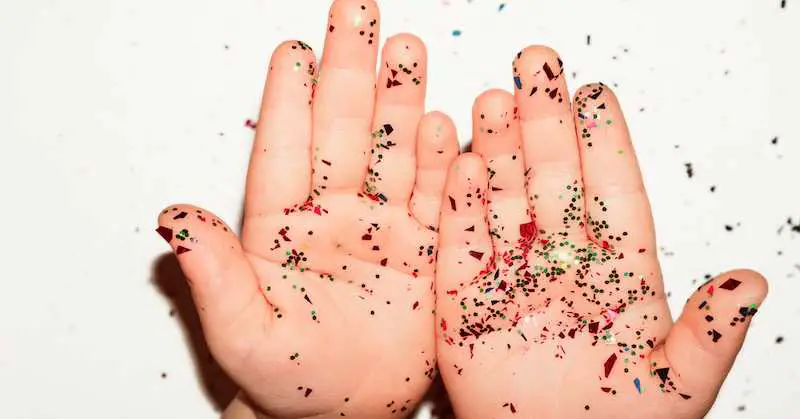
Glitter is everywhere! And if you’ve ever done a crafty project with your kids or for a school activity, you know all too well, that it has an uncanny ability to get into everything. It’s found in cosmetics, make-up, hair products, party paraphernalia and even clothing.
Glitter is actually categorized as a “microplastic,” which are miniscule bits of plastic smaller than 5 millimeters. Scientists are just now beginning to explore the health and environmental risks and damage this plastics present to us and our ecosystems.
Microplastics like cosmetic glitter are made by bonding aluminum with polyethylene terephthalate (PET) which releases endocrine-disrupting chemicals. When they end up in our water systems and enter the food chain, they eventually end up in our bodies through eating seafood.
According to an article in Ecowatch:
“there’s the domino-like effect of microplastics through the food-chain, for the sheer volume of microplastics consumed by seafood-loving humans is staggering. This study from the University of Ghent found that Europeans who eat shellfish can consume as much as 11,000 microplastics per year.”
“At the rate we are going, there could be one pound of plastic for every three pounds of finfish in the ocean in the next ten years,” wrote Nick Mallos, director of Ocean Conservancy’s Trash Free Seas Program, in an email. “And unless action is taken, the problem is only going to get bigger.”
As if these plastics we are eating were not bad enough, PETs encapsulate organic pollutants and pathogens, which adds to the toxicity, and we end up eating both the plastic and the pollutants and pathogens. And, there’s a growing body of research that’s been connecting these endocrine disrupting chemicals with both the reproductive health of fisheries, as well in humans that live near the plastic factories.

There has been positive change and action. Many researchers and environmental activists are calling for a ban on glitter and on microbeads which are often found in products like exfoliating beauty products.
In the U.S. former President Obama’s administration banned plastic microbeads in cosmetics and personal care products. And soon after, the U.K. and New Zealand followed with their own prohibitions.

We hope this article will raise awareness of this serious health and environmental concern and encourage people to stop using products that contain microplastics.
http://expand-your-consciousness.com/glitter-must-banned/?t=HHL&fbclid=IwAR0BBLuLlsMsHd5iHnz2nkuVr26c-KO3H4TEXsept7SmWYOiXIRWtiIRWc4






 Sat Mar 23, 2024 11:33 pm by globalturbo
Sat Mar 23, 2024 11:33 pm by globalturbo


